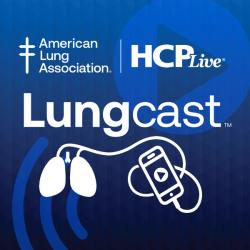
OR WAIT null SECS
Limiting Sodium Intake Can Reduce Atherosclerotic Cardiovascular Disease Risk
A secondary analysis of the data collected by the DASH-Sodium trial indicates that dieting and sodium intake limits are additive in their effects on ASCVD risk.
A recent secondary analysis of the Dietary Approaches to Stop Hypertension (DASH)-Sodium trial has indicated that sodium reduction and the DASH diet independently and additively reduced 10-year atherosclerotic cardiovascular disease (ASCVD) risk.1
“While the [DASH-Sodium] trial found that sodium reduction and the DASH diet independently improved blood pressure, the effects of these dietary interventions on 10-year ASCVD risk were not assessed,” wrote Hanna M. Knauss, MD, department of medicine, Beth Israel Deaconess Medical Center, and colleagues. “We hypothesized that sodium reduction alone would decrease risk and that the combined effect of sodium reduction with the DASH diet would be additive.”1
The original DASH-Sodium trial was a randomized controlled trial including 412 adults ≥22 years, all of whom had elevated blood pressure or hypertension. They were randomly assigned to 12 weeks of either a standard American diet or the DASH diet, which centered around fruits, vegetables, and low-fat dairy while reducing saturated fat and cholesterol. Measurements of high-sensitivity cardiac troponin I, NT-proBNP, and hs-CRP were taken at baseline and 4, 8, and 12 weeks after randomization.2
The DASH diet led to a statistically significant decrease in high-sensitivity cardiac troponin I (17.78%; 95% CI, -29.51% to -4.09%, P = .01%) and hs-CRP (19.97%; 95% CI, -31.94% to -5.89%, P = .01%) at week 12 compared to control. From these data, researchers determined that the DASH diet reduces biomarkers of subclinical cardiac injury and inflammation over time.2
Knauss and colleagues compared the results of the DASH-Sodium trial to the effects of solely lowering sodium levels. Their trial collected 412 participants of mean age 48 +/- 10 years and 57% female. However, at the point of analysis, 22 were missing covariates necessary for an ASCVD risk calculation and were excluded, leaving 390 participants in this secondary trial. The same diets were utilized, although participants were additionally randomized to one of three sodium levels within each diet – low, medium, or high.1
All participants were initially assigned to the high-sodium diet for a 2-week run-in period, followed by randomization to respective diets and sodium levels. Participants then consumed each level of sodium for an average of 30 days; each period was separated by a 5-day-average washout period to resume normal diets.1
Knauss and colleagues found that mean 10-year ASCVD risk score at baseline was 3.13% in the control diet and 2.63% in the DASH diet. By the end of the trial, the DASH diet exhibited an absolute difference of -.12% (95% CI, -.23 to -.02) and a relative difference of -5.33% (95% CI, -9.32 to -1.16).1
Notably, however, the team indicated that there was no evidence that diet had any effect on the effects of low sodium intake on risk (P-interaction = .26). Instead, they provided the overall results, indicating that low sodium level changed ASCVD risk by -.34% (95% CI, -.45 to -.23) among the control diet and -.17% (95% CI, -.25 to -.08) in the DASH diet. Medium sodium level changed ASCVD risk by -.19% (95% CI, -.29 to -.09) in control and -.09% (95% CI, -.18 to -.01) in the DASH diet.1
However, despite the optimistic appearance of these data, Knauss and colleagues point out the limitations of their study. First, they utilized a relatively short follow-up period with each sodium intervention lasting only 30 days. Second, individuals with known heart disease, renal insufficiency, diabetes mellitus, and those on antihypertensive treatment were excluded: many Americans meet one or more of these exclusion criteria. Given these limitations, investigators call for further action to be taken in monitoring and promoting healthy diets and habits.1
“These effects were additive when combining both interventions versus either alone,” Knauss and colleagues wrote. “Our findings reinforce the need for public efforts to promote adoption of DASH eating habits and sodium reduction to mitigate CVD risk.”1
References
Knauss HM, Kovell LC, Miller ER 3rd, et al. Dietary sodium reduction lowers 10-year atherosclerotic cardiovascular disease risk score: Results from the DASH-sodium trial. Am J Prev Cardiol. 2025;22:100980. Published 2025 Mar 27. doi:10.1016/j.ajpc.2025.100980
Belanger MJ, Kovell LC, Turkson-Ocran RA, et al. Effects of the Dietary Approaches to Stop Hypertension Diet on Change in Cardiac Biomarkers Over Time: Results From the DASH-Sodium Trial. J Am Heart Assoc. 2023;12(2):e026684. doi:10.1161/JAHA.122.026684
Related Content:


